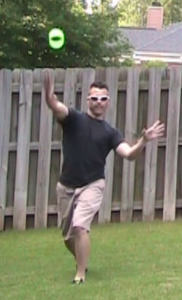
One of the most interesting variations on the traditional paper plane is the tubular version, which trades the basic shape of the typical airplane for what looks like a short section of a wide pipe. The tube paper airplane needs to be thrown slightly differently, but is capable of reaching the same speeds and distances of its flatter cousins. After showing his followers how to make a tubular paper airplane on his popular YouTube channel Commando Designs, Tony Davis decided to try and 3D print a light, plastic version and see if it would fly just as well.
It ended up working so well that Davis decided to share his final design with his followers on Thingiverse. He even created two different designs of his Vortex that respond in different ways when thrown. The solid version is closer in design to the traditional tubular paper airplane and flies relatively straight ahead. On the other hand, the second design with a few slits along the side tends to fly in the direction of the slits. By 3D printing the Vortex, Davis has made it more durable so it will last considerably longer than a paper version.
Here is a video of Davis explaining how to throw the Vortex Wing:
Davis is an artist and designer who has just recently started to use 3D printing in his hobby videos after purchasing a MakerBot Replicator. He started his YouTube channel back in 2007, mostly focusing on airbrushing techniques and painting, but lately his passion for 3D printing and design has become his main focus. Davis learned to 3D model using 123D Design, but he has since expanded to use multiple programs for his projects, including Fusion 360, Meshmixer, and of course MakerWare. He also recently designed an impressive Iron Man articulated figure that caught our attention.
“I’m just a hobbyist when it comes to 3D Development. But I think that helps. I don’t get too hung up on designs needing to be perfect like the pros do. I generally make a design, test, tweak, test, tweak, test, tweak… etc. That’s why having a 3D printer is awesome. I can crank out as many prototypes as I want to get a design where I want it. I love 3D printing. It feels like cheating. Once you get a little design experience under your belt, you can go from cool idea to working product in a few hours,” says Davis of his new passion.
While the Vortex Wings can be scaled up or down Davis said that the easiest width to throw is about four inches. The smaller the tube the better they fly, and they will typically fly about 10 to 40 yards depending on how hard you throw it. Are you going to start 3D printing your paper airplanes? Let us know on our 3D Printed Vortex Flying Tubular Wing Model forum thread at 3DPB.com.
